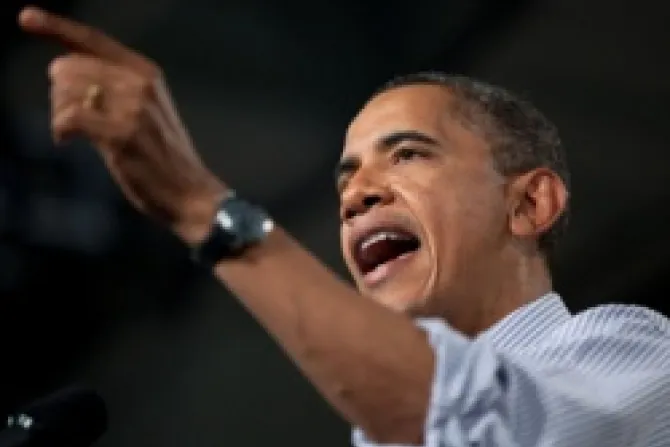Washington D.C., Apr 3, 2012 / 17:00 pm
Recent policies by the Obama administration that have isolated many American Catholics may be part of an election strategy to reach out to non-Christian and non-religious voters, says one political scientist who specializes in Catholic research.
“I don't think his campaign is really worried about ‘winning’ the Catholic vote,” said Mark M. Gray, director of Catholic polls for Georgetown University’s Center for Applied Research in the Apostolate.
Gray explained in a March 29 blog post that President Obama may be willing to risk losing the Catholic vote as he works to build support among those who are not Christian or not religious at all.
In his post, Gray examined a series of decisions by President Obama and his administration which “could lead to the appearance of bias against the Church that would potentially damage his support among some Catholics in an election year.”
A recent analysis by the Center for Applied Research in the Apostolate estimated that there will be approximately 55.6 million Catholics in the voting-age population for the 2012 election.
Seventy-nine percent of these Catholics live in 16 states that offer a combined 306 Electoral College votes.
These states create a significant target for candidates, who need 270 Electoral College votes to win the race.
The high concentration of Catholic voters in heavily weighted states means that the Catholic vote could be critical in the upcoming election.
In addition, key battleground states like Florida, Pennsylvania, Ohio, Michigan and Wisconsin are estimated to have more than 1 million voting-age Catholics each. In the contested states of New Hampshire and New Mexico, Catholics accounted for more than one-third of the vote in the 2008 election.
However, according to a February analysis released by the Pew Research Center, Catholics in the U.S. have shifted away from the Democratic Party since the 2008 election.
Many have questioned why President Obama would isolate Catholic voters when they will be so critical to his re-election campaign this fall.
Gray acknowledged that “most presidential election winners have carried a Catholic majority.”
While Catholics are not always united in the way that they vote, “winning a majority of the vote of Catholics has still been very important,” he said.
At the same time, Gray said, “a tipping point may have been reached” in the 2012 election.
He explained that a growing voting bloc, composed of non-Christians and those with no religious affiliation, “is now sufficient in size and support for the Democratic Party where President Obama could lose the Catholic vote and still have a good chance of winning re-election.”
This group of voters tends to disagree with Catholics and other Christians on social issues such as abortion, “gay marriage” and embryonic stem cell research, he observed.
(Story continues below)
Gary suggested that the Obama administration’s recent policies may be an intentional part of a broader strategy to reach out to these non-Christian and non-religious voters, at the risk of losing the Catholic vote.
“What seemed so irrational to some weeks ago is beginning to look to me like a campaign strategy,” he said.
“In other words, perhaps we should not be so surprised to see President Obama take some of the positions he has in direct opposition to Catholic leaders.”



